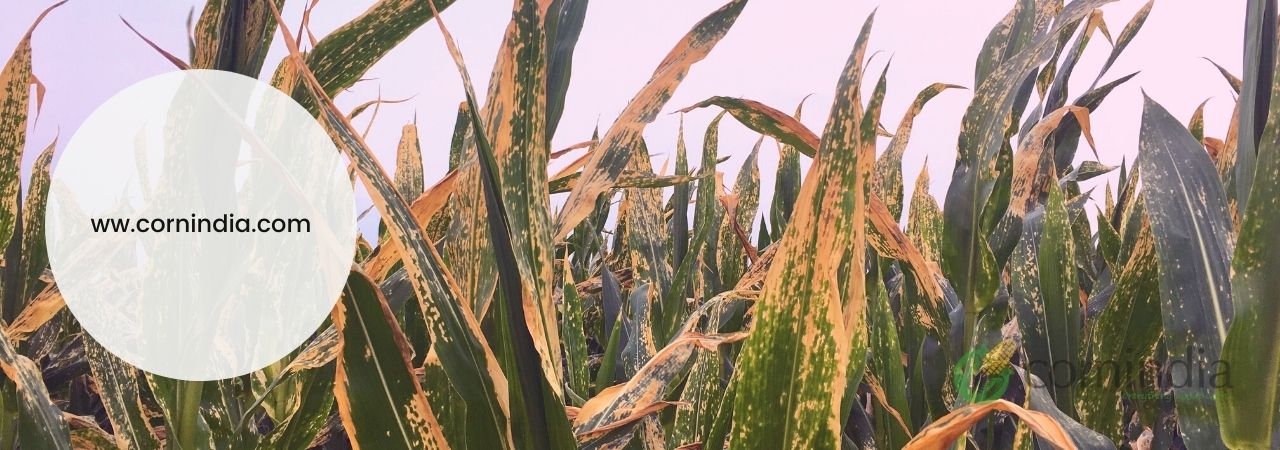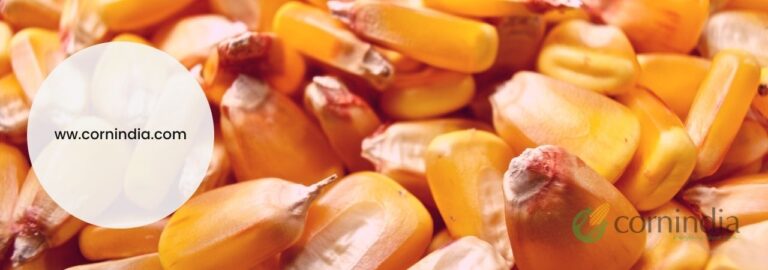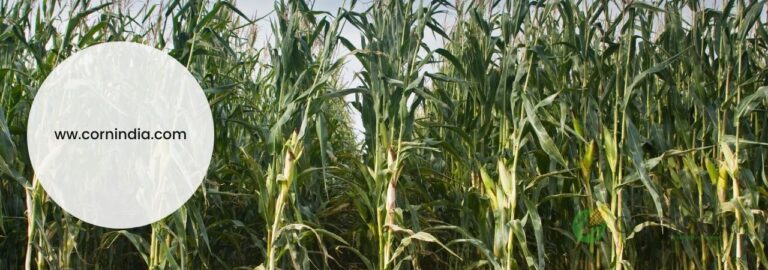
Abstract
Phenotypic and genotypic correlations were calculated under artificial turicum leaf blight stress in maize inoculated conditions to assess the degree of relationship of yield components with grain yield in maize. Genotypic correlation coefficiants possessed higher values for all the yield parameters than phenotypic ‘r’ values. Yield was positively and significantly correlated with number of kernels per row, number of kernel rows/ear, ear length, ear girth and 100 kernel weights both in parents and single crosses. Turicum leaf blight disease score has negatively correlated with grain yield both in parents and single crosses. The result indicated possibility of developing a high-yielding turcicum leaf blight-resistant variety/hybrid cultivar if genotypes are selected based on their strongly associated yield contributing components.
KEY WORDS: Phenotype, Genotype, Correlations, Turcicum Leaf Blight, Maize, Yield Parameters
Grain yield in maize is a complex character and its expression depends upon the interaction of different yield parameters including turcicum leaf blight stress in maize. Information on the correlation coefficients between grain yields with its yield parameters s prerequisite for improving grain yield. Many workers have reported positive and significant correlation between grain yield with one or other or both of yield components (Laptev, 1981; Baktash et al., 1981; Sharma et al., 1982; Rao, 1986; Manmohan, 1984; Anuradha, 1988; Ravindranath, 1988; Rachupathi Reddy, 1989; satyanarayana, 1990). Genetics of turicicum leaf blight resistance in maize has been done extensively but association studies between grain yield and its components under turicucum leaf blight stress in maize are very limited (Rachupathi Reddy 1989). Keeping this view as back ground, present study was under taken to know the degree of association in some maize genotypes under artificial turicicum leaf blight stress in maize epiphytotic conditions.
Table of Contents
Materials and Methods(Leaf Blight Stress in Maize)
The seed material consisting of ten parents (Mo 17, CM 119, CM120, H 98, X 102, H 100, Sona 48, J126, J155, J167) and 45 straight, F1 crosses were grown during rabi 1989-90 in a randomized complete block design with three replication at the Agricultural Research Station, Amberpet, Hyderabad. All the cultivars were sown in single rows of 5 m long with were 75 cm apart. Plant to plant distance was maintained as 20 cm within a row. The crop was provided with recommended cultural practices. Biotic turcicum leaf blight stress in maize was artificially created by introduction of diseased leaf material into the whorls of all individual plants followed by spraying with spore suspension. Six such inoculations were attended commencing from 20 days after planting till tasseling stage at an interval of six days each.
Data from randomly selected five plant bases were recorded for plant height, ear height, ear length, ear girth, number of kernel rows per ear, number of kernels per row and hundred seed weight while on a total plant basis, for days to 50 per cent silking, days to 50 per cent dry husk, turcicum leaf blight stress in maize disease score and grain yield. Disease score was recorded in 1 to 5 scale of Payak and Sharma (19820 where 1.00 to 2.5 scale considered as resistant and above 2.5 and up to 5.0 as susceptible. The correlation coefficient analysis was done on the mean data according to Dewey and Lu (1959).
Results and Discussion
The values of genotypic correlation coefficient were higher when compared to phenotypic correlation coefficients for all the yield parameters (Table 1). This observation indicated the masking effect of environment by the genetic constitution of each trait.
Table.1 Correlation (phenotype and genotype) coefficients in parents and single crosses (F1s) of grain yield with various yield components under turcicum leaf blight stress in maize at Agricultural Research Station, Amberpet.
| Characters | Association with grain yield | |||
| Phenotypic correlation coefficients | Genotypic correlation coefficients | |||
| Parents | Single crosses | Parents | Single crosses | |
| Days to 50% silking | -0.03 | 0.32** | -0.05 | 0.38** |
| Days to 50% dry husk | 0.04 | -0.18 | 0.06 | -0.2* |
| Plant height | -0.21 | 0.16 | 0.32 | 0.20 |
| Ear height | 0.19 | 0.34** | 0.21 | 0.39** |
| Turcicum leaf blight | -0.21 | -0.29** | -0.25 | -0.35** |
| Earlength | 0.80** | 0.35** | 0.91** | 0.45** |
| Ear girth | 0.79** | 0.27** | 0.91** | 0.33** |
| No. of kernels/row | 0.75** | 0.36** | 0.86** | 0.46** |
| No. of kernel rows/ear | 0.71* | 0.20* | 0.92** | 0.31** |
| 100 kernel weight | 0.50* | 0.22** | 0.55** | 0.25* |
*, **Significant at 5 per cent and 1 per cent level respectively.
Parents
The phenotypic correlation coefficient of yield with its components indicated that yield was positively and significantly correlated with ear length (0.80) followed by ear girth (0.79), number of kernels/row (0.75), number of kernel rows/ear (0.71) and 100 kernel weight. In the genetic analysis correlation coefficient, number of kernels rows /ear (0.92), followed by ear length (0.91), ear girth (0.91), number of kernels/row (0.86) and 100 kernel weights (0.55) had positive and significant correlation with yield while days to 50 per cent silking and turcicum leaf blight stress in maize disease score had negative association.
Single crosses
In F1 single crosses, number of kernels per row (0.36) followed by ear length (0.35), ear height (0.34) days to 50% silking (0.32) ear girth (0.27),100 kernel weight (0.22) and number of kernel rows/ear (0.20) in that order had positive and significant correlation with yield at phenotypic level. While turcicum leaf blight disease score (-0.29) was negatively and significantly associated. In case of genotypic correlation coefficients number of kernels/row (0.45), ear height(0.39), days to 50% silking (0.38), ear girth (0.33), number of kernel rows/ear (0.31)and hundred kernel weight (0.25) possessed positive and significant correlation with yield; while turiccum leaf blight stress in maize disease score was (-0.35) negatively and significantly correlated.
The correlation coefficients for the parental inbreds indicated that yield was positively and significantly correlated with number of kernel rows/ear, ear length, ear girth, number of kernels per row and 100 kernel weight. Therefore, in the process of selection of parent’s emphasis may be laid on these yield components to increase gain yield. This statement also enjoyed the support of Anuradha (1988) and Satyanarayana (1990). In case of single crosses, grain yield was significantly and positively correlated with number of kernels/rows, ear length, ear height, days to 50% silking, ear girth, number of kernel rows/ear and 100 kernels weight. In the similar type of investigation Bhole and Patil(1984), Rao(1986), and Ravindranath (1988) reported significant correlation for ear length and 100 grain weight while Sharma et. Al (1982) and Raghupathi Reddy (1989) for number of kernels per row and number of kernels per ear while for all the ear traits of Singh et al. (1987) and Satyanarayana(1990).
Anuradha (1988) and satyanarayan (1990) observed a negative correlation coefficient for charcoal rot disease score, days to 50 per cent silking and days to 50% dry husk with grain yield similarly in the present study also, turcicum lo blight disease score and days to 50 per cent of husk possessed negatively significant correlation with grain yield.
The present studies in short revealed to yields in parents and single crosses of maize were strongly dependent upon number of kernels rows/ear, ear length, ear girth and 100 kernel weight with addition of resistance to turcicum leaf blight. Therefore for developing a high yielding turcicum leaf blight stress in maize is resistant variety, the breeder should take of all these yield components. The strong relative association of these above yield parameters with grain yield is attributed to gene action of kage and pleiotropy.
References
- ANURADHA.K.(1988) Stydies on Line x Tester analysis for yield and its components and resistance to charcoal rot (macrophomina phaseolina) in maize Zea mays.L) M.Sc(Ag) thesis, Andhra Pradesh Agricultural University, Hyderabad.
- HARTASH F.Y., YOUNIS, M.A. YOUNIS, A.H. AL. and AL-ITHAWI.B.A. (1981), Correlation coefficients between top crosses and diallel crosses in corn (zea mays) Mesopotamia.J.Agric.,16:51-58.
- BHOLE.G.R and PATIL, R.C. (1984). Genotypic and phenotypic correlations in maize. J.Maharashtra Agric Univ., 9:250-251.
- DEWEY, J.R. and LU.K.H(1959). Correlation and path coefficient analysis of components of crested wheat grass production. Agron.J.51:515-518. LAPTEV,YN.P.(1981). Correlation in maize breeding. Refer Zhurnal 3; 202.
- MANMOHAN,E.(1984).Evaluation of the combining ability and association of characters in inbred lines of maize(zea Mays .L).M.Sc. thesis. Andhra Pradesh Agricultural University, Hyderabad.
- PAYAK. M.M.and SHARMA, R.C.(1982). Disease rating scales in maize in India. In: Techniques of scorting for Resistance to important Disease of Maize, ICAR, New Delhi p-1-4.
- Raghupathi Reddy .K 1989. Studies on genetic analysis of yield and resistance to leaf blight (Helminthosporium turicum pass) in maize (Zea Mays L). Ph.D thesis A.P. Agricultural University.Hyderabad
- RAO, N.J.M. (1986).Genetic analysis of yield and other quantitative traits of economic importance of maize (zea mays. L) Ph.D thesis, institute of Agricultral Sciences.Banaras Hindu University, Varanasi.
- RAVINDRANATH, M.V. (1988). Studies on combining ability and prediction of superiror double and 3 ways cross hybrids in maize(Zea mays L). M.Sc. thesis, Andhra Pradesh Agricultural University, Hyderabad.
- SATYANARAYANA, E.(1990). Genetic analysis of yield and resistance to charcoal rot (Macrophomina phasedina in maize (zea mays L) Hyderabad. Ph.D.thesis , Andhra Pradesh Agriculatural University, Hyderabad.
- SHARMA, S.R., KHEHRA, A.S. DHILLON, B.S and MALHOTRA, V.V.(1882). Evaluation of ‘S’ lines of maize crossed in a diallel system. Crop Improv., 1:42-47.
- SINGH, RAMMOHAN RAO, D.S. and HARBIRSINGH 1987. Correlation and path coefficient analysis of yield and yield components in maize Ganga hybrid-5, Haryana agric.J.Res., 17 (1):64-67.
Authors: E.SATHYANARAYANA
Agricultural Research Station, Amberpet, Hyderabad






